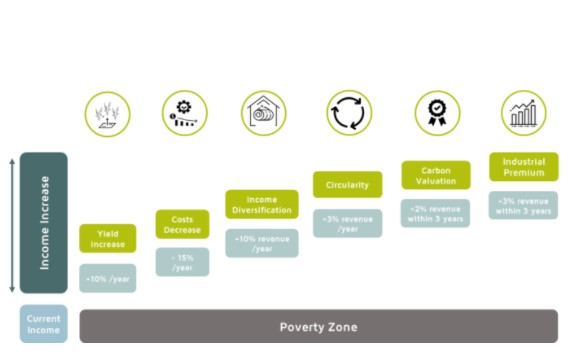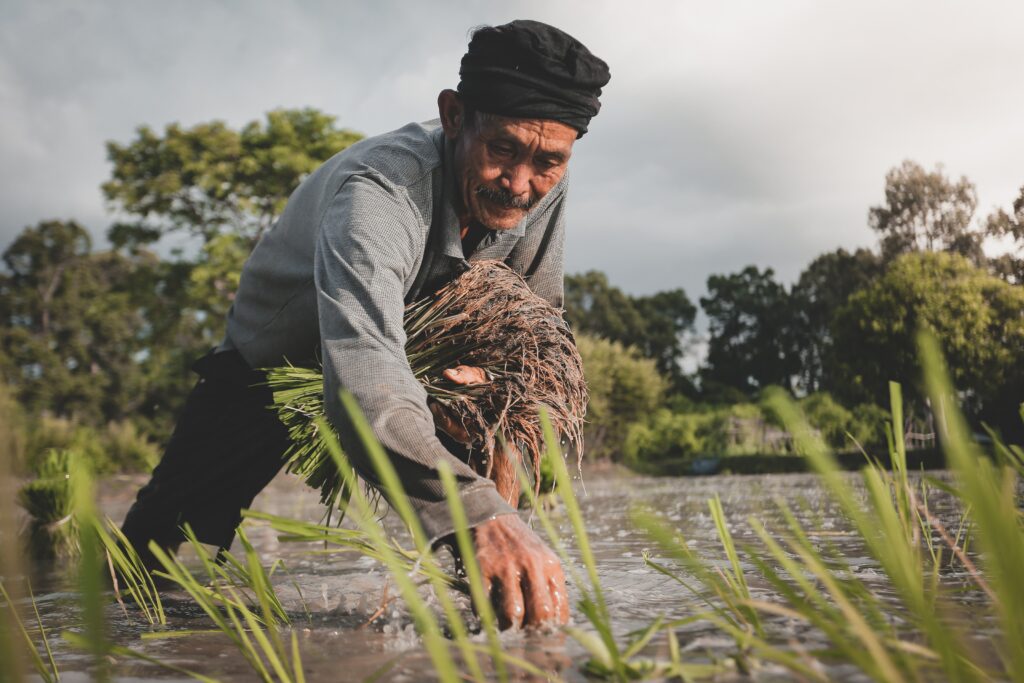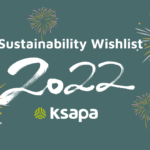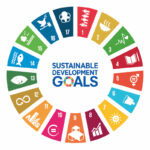Ksapa recently organized a webinar “Solutions For Resilient Raw Materials”. For the occasion, we invited experts on the subject to share their visions: Shivani Kannabhiran, lead of the agricultural center at the OECD. Helene Vermont, Responsible Purchasing Manager for Michelin. Farid Baddache, CEO of Ksapa and risk expert in supply chains.
Supply of Resilient Raw Materials: an Imperative
Regulatory pressure, stakeholder expectations and changing consumer behavior encourage the transformation of commodity supply chains towards greater transparency and resilience.
The duty of vigilance incrementaly establishes incorporate critical business processes. New legal tools are emerging around the world. For example, the UK Modern Slavery Act, the French duty of vigilance, the recent German law governing the due diligence of companies in supply chains («Lieferkettensorgfaltspflichtengesetz»). Regulatory pressures are multiplying and pushing companies, industrials and investors to take action. Consumers, and especially young people – millennials – demand ethical products including traceability. These criterias are fully part of the purchase decision, and are therefore not to be ignored. The positive impact generated by companies is therefore increasingly strategic. It nurtures consumer confidence and now ensures the survival of businesses themselves. Addressing these challenges forces companies to act beyond their own scope and minimise emissions on scope 3 of their value chain. This is a complex but not impossible task.
Raw materials are the non-transformed materials used in the production of finished products. They are also known as primary products. Raw materials, although often only associated with agricultural products such as coffee, beef, tea, sugarcane or palm oil, can also include oil, plastics, natural gas, graphite, lithium or rare earths to name a few.
Cross-cutting Risks of Raw Materials Supply
Each agricultural or non-agricultural supply chain has environmental and social challenges. A compelling example would be the direct impacts of the soybean supply chain on deforestation of the Amazon rainforest in Brazil. The cultivation of cocoa also increasingly encroaches on the Ivorian forest every year. Between natural habitat loss, soil erosion, biodiversity loss… Deforestation plays a drastic role in global warming. In 2018, the equivalent of 3.6 million hectares of forest were razed. This is the equivalent of the size of Belgium or Lebanon in a single year. Data shows that 80% of these losses were related to agricultural commodities. IPCC reports demonstrated already multiple times the involvement of raw material production in deforestation. A study by the Carbon Disclosure Project shows that 9 out of 10 listed companies identify at least one risk of deforestation related to agricultural commodities such as wood, soybeans or palm oil. 32% of the companies surveyed have already identified direct risks.
In addition to environmental risks, there are real social risks that should not be overlooked. The textile industry, for example, is proof of this with working conditions that are often deplorable. The most basic human rights are neglected, and many situations are regularly controversial. Very few social norms are actually in place to ensure the conditions for production and transformation of supply chains.
Tools Building Resilient Raw Materials Supply
OECD and FAO Guidance on the Resilience of Agricultural Sectors
The importance of the duty of vigilance is a fundamental regulatory trend. The multiplicity of vigilance approaches demonstrates this. The notion of duty to be vigilant remains specific and requires to be understood as a whole. Shivani Kannabhiran leads the agricultural sector at the OECD’s corporate responsibility center. It sets out this instrument in the responsible sourcing of supply chains.
The OECD’s Center of Corporate Responsibility is working on scaling-up strategies. The OECD-FAO Guide for Responsible Agricultural Sectors provides strategic and practical recommendations for companies. The objective is to help stakeholders adopt responsible conduct in their agricultural sectors. These recommendations are expected to be complemented by a regulatory system to be improved by governments. Nevertheless, they represent a support for a better understanding of the risks and an alignment across supply chain’s ecosystems. The recommendations included in these practical guides can especially play a supporting role for small and medium-sized enterprises. The organization therefore makes training a point of honour. It has recently opened a digital training centre for SMEs.
The Responsible Sourcing Approach of a Multinational Company: the Michelin Example
Michelin is a world leader in tire manufacturing. How to define responsible sourcing principles in dialogue with stakeholders? What appropriate responsible tracing can make sense when sourcing raw materials from highly fragmented supply chains? What do we buy? Who do we buy from? How do we buy? Hélène Vermont, Responsible Sourcing Manager for Michelin, shared several key strategic and practical considerations deployed across a multinational company like Michelin. During her contribution, she especially referred to:
- Creating a code of conduct for suppliers to ensure the highest transparency of the company’s expectations of suppliers
- Designing a systemic approach for reporting of emissions scope 3 of supplier activities for more transparency (related to the CDP Program)
- Setting high emission reduction targets for supplier activities
- Evaluation monitoring to examine which sectors are considered most at risk
- Promote the purchase of recycled and renewable materials
- Establishment of a conflict minerals policy for suppliers
For Michelin, natural rubber yet represents ¼ of the raw materials purchased. This category requires a specific approach in addition to all the elements that may have been mentioned previously. The sector is facing major environmental and human issues. Nearly 2 million farmers are involved in natural rubber supply chains. Natural rubber is a highly fragmented supply chain. Tire production alone uses 3/4 of the world’s natural rubber production. The company has a crystal vision on this sourcing category, developed in discussion with stakeholders and crystalized in a dedicated natural rubber purshasing policy. Actions are carried out across the supply chain, engaging tier 1 suppliers, as well as exploring effective solutions to engage at the level of smallholder farmers directly.
Deploy a Smallholder Approach in Emerging Economies
Farid Baddache, CEO of Ksapa and Supply Chain Risk Expert is also a speaker at this webinar and shared his wealth of strategic and practical experience in integrating industrial supply chain in social and environmental programs. Ksapa is a sustainable development firm that provides consulting, engagement and impact investing solutions.
Ksapa’s SUTTI impact investing solution is a program dedicated to commodity supply chains. It is a large-scale program, adaptable and replicable to all local circumstances and specificities with a single objective: to improve the social-environmental performance of supply chains and to be able to help communities raising revenues above the poverty line.
The SUTTI program’s approach is designed to focus on smallholder farmers in the first place, with a view to creating a positive impact within local communities. This involves vocational training in a hybrid format: digital (permanent access and high dissemination) as well as face-to-face formats (building trust and anchoring community engagement), the promotion of best agricultural practices, crop diversification, income growth, social inclusion, improved workplace security and labour market facilitation.
Farid Baddache explained the integration of an essential industrial vision into the programme and makes it possible by combining the needs of both smallholder farmers and industrials. With a view to scaling up in the next decade, Ksapa is finally combining a strong financial dimension to the SUTTI programme, notably through the commitment of committed investors, carbon credits, and the “blended finance” type of financial method.
A concrete case study: CASCADE
The CASCADE project is a concrete example of a programme deployed on the ground to make a direct contribution to smallholders in the natural rubber supply chain in the central Sumatra Island region of Indonesia. CASCADE is the first project to encompass the entire natural rubber supply chain from the original players such as the small natural rubber operators to industrial buyers such as Michelin and its automotive customers like the Volkswagen Group (Porsche brand). 1,000 farmers are trained by Ksapa, suppported by a local NGO responsible for ongoing villager engagement to adopt sustainable and efficient extraction methods.

What Pathway Can Work to Scale Up Programs?
Scale is crucial in creating positive impact on the ground.
- For Shivani Kannabhiran, scaling up involves a multiple approach hence the use of all the instruments available for government such as: regulation, certification, training, but also the multi-faceted integration of all stakeholders at all levels. Notably through partnerships between companies themselves but also with local governments for example.
- The Michelin Group’s strategy is based on a risk based approach rather than a systematic approach to traceability and certification, which can prove to be slow and does not apply to highly fragmented smallholder supply chains. Once the risk has been identified, through the deployment of a dedicated tool called RubberWay, appropriate remediation projects can be deployed, such as the CASCADE project outlined above. The vision of the Michelin scale-up therefore involves projects to minimise risks that can be replicated from one particular supply chain to another.
Conclusion
The last few years have been full of transformations, with younger generations pointing out and questionning where it hurts. Where does the food I eat come from? Do I eat responsibly? The climate awareness of these young people has never been stronger than it is today. And it is a necessity to move the lines. This forces companies to adopt more virtuous behaviours, engage in real traceability processes and minimize risks across their value chain and the suppliers they work with.
The pressure and expectations of stakeholders on scope 3 of supply chains not only mitigate carbon emissions in general, but also plays an important role on the social aspect. As Farid Baddache points out, the environment and social are intrinsically linked. It seems difficult to approach one of the two concepts while omitting the other.
A graduate of the CERDI School of Economics, Eléa works at Ksapa as an Analyst and Community Coordinator. She is specialised in Development Economics in emerging countries, with a major in Sustainable Development.
With an affinity for international business, she spent two years in Kuala Lumpur as an exchange student where she worked in a consulting firm on CSR topics and business development.
Involved in several social inclusion and environmental projects, Eléa wishes to contribute to the improvement of environmental and ethical practices within the private sector.
She speaks French and English.






